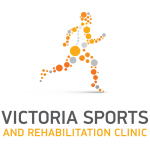One of the most common questions I hear from parents while treating their babies is “Is the shape of their head ok?”. Slight miss-shapedness is easily noticed by parents or they may have heard comments from a family member or friend. This can be really concerning to parents, especially when the shape is quite distorted, however it is really important to understand that it is completely normal and very easily treated in most cases.
Why do the bones move and distort?
A baby’s skull is very flexible and mouldable due to it not being fused. A Baby’s skull is made up of lots of little bones that are connected by fontanelles so that the skull can move and mould as needed for the birth and allow the brain to grow. This is why when you look at a newborn baby, you will notice a soft spot at the top of the head and if you look closely you can see a pulsing movement.
It can be very common for babies to have an asymmetrical head shape when born, particularly a cone/elongated shape. This is usually due to the baby’s position while growing inside the uterus or as a result of being in a particular position within the pelvis or birth canal during labour. Over time, most head shapes should return to a more normal shape and appearance and cause little issues at all to the baby.
A condition that concerns a lot of parents however is very concerning is called Plagiocephaly or Brachycephaly, which is when the distortion is prolonged or more significant. This flattening of the head in one area commonly occurs in a baby who has a preference to only look or feed one way. This prolonged time or preference of the neck to be in one position leads to increased pressure on one section of the skull and the growth/position of the skull bones change their position. Plagiocephaly occurs when one side becomes distorted and is very commonly in torticollis and other conditions affecting the neck and upper limb, as well in babies that have had more complexed births including with forceps or suction. Brachycephaly refers to a flattening of the back skull bone.
Plagiocephaly does not affect the development of the brain, but it can lead to a change in physical appearance of the skull and facial features, which can be upsetting and concerning for parents. It is also really common to notice a balding patch in the hair where the baby spends a lot of time resting the skull.
How do I prevent flat spots?
Encourage Tummy Time! The more time they spend on their stomach, the more time they are spending encouraging their postural strength, and staying off the position that is pressing on the flat spot.
- Encourage babies to look both ways and encourage rotation to the non dominant side during in awake time. Use things they like to look at such as mirrors, windows, toys, noise stimulation etc to encourage their movement.
- Alternate the end of the cot that the baby sleeps in or change the position of the cot in the room. This will encourage your baby to look the other way to observe things of interest.
- Vary holding and carrying positions of your baby. This will help reduce the pressure placed on the back of their skulls. It will also encourage them to look at objects from different angles.
- It is really important to remember to NEVER use props or pillows in your baby’s cot or sleeping area to keep their neck in a certain position. This is completely against the SIDS recommendation.
Reference: Why Is Tummy Time Important? Plus, 10 Tips for Success (mamanatural.com)
What do I need to do if I notice my baby’s head shape change?
If you or someone else notices a change in your baby’s head shape it is really important to speak to your maternal child health care nurse at your next appointment or make an appointment with your GP. This is so that measurements can be taken to ensure that the growth of the skull is not being impacted, which can occur in more serious cases where the skull bones start to prematurely fuse. In most cases of plagiocephaly, the natural strength of the neck improves and once the baby regains full neck range of motion, the flat spot should resolve.
When taking your baby to a Paediatric manual therapist such as an Osteopath, Physio or Chiro, they will assess the upper body, neck and head to determine if there is a primary cause to the head shape change. If there is, paediatric manual therapy has been seen to help in the management of plagiocephaly, especially when it is secondary to a condition of the neck, such as torticollis. As an Osteopath, we use very gentle techniques on babies including soft tissue massage, joint articulation and stretching as well as some cranial and postural techniques. Techniques that use cracking or adjusting the spine are never used on babies. Education and home exercises are always given and recommended to help aid in the progress of the treatment.
More serious cases of plagiocephaly will require a referral to Monash Childrens or the Royal Childrens hospital where a full screen can be performed and the implementation of a helmet can be discussed. The use of helmet therapy for plagiocephaly is uncommon, and if required babies are fitted with a lightweight helmet to wear for varying hours throughout the day. This intervention traditionally gives little discomfort to the baby however can be quite confronting to parents.
We hope this information helps you and iIf you are worried about the shape of your baby’s head, please mention it to a health professional.
